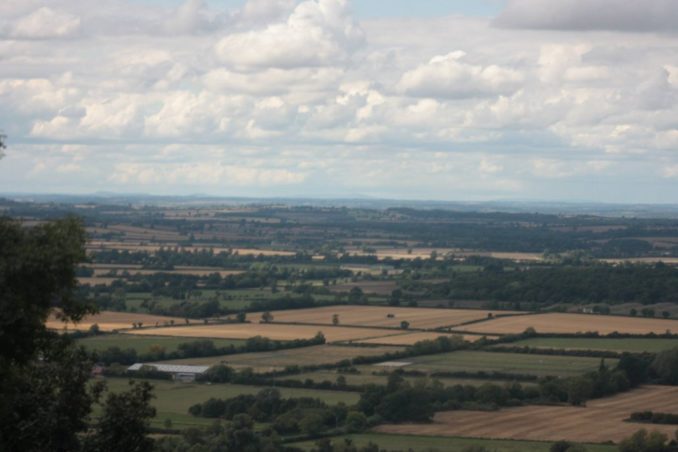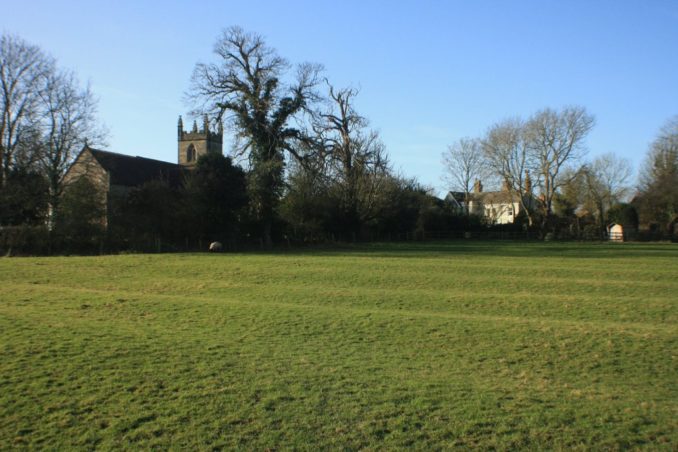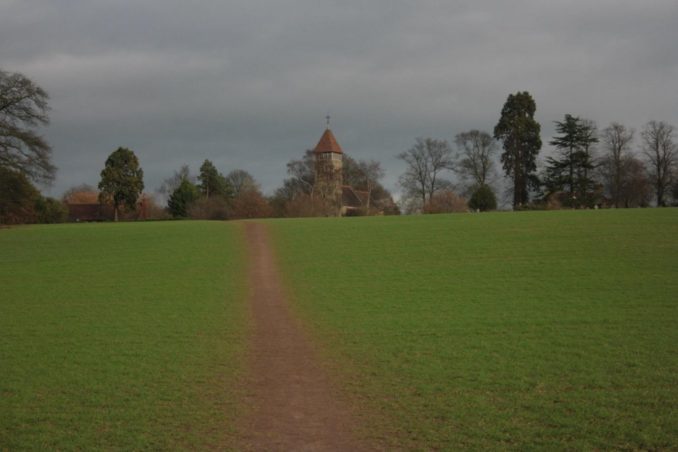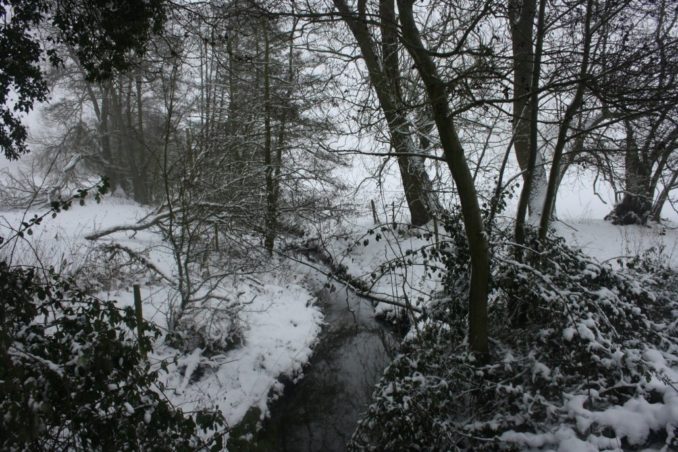
I must go out for a walk again,
just my walking boots and I.
And all I ask is an OS map
and one of those little plastic wallets to keep it dry.
As hobbies go, walking is one of the cheaper ones. You already have feet and most probably a pair of shoes. And in my experience a quick riffle through any wardrobe will provide a sufficiency of jackets, trousers and so on, such that you are able to venture outdoors without scaring the horses. But there is of course the issue of correct apparel. One does not want to be dressed like one of the hoi polloi, out for a quotidian toddle to the shop for a packet of fags and a pint of milk. Oh, no indeed! You, Sir, are a Rambler! You have a map, a compass and a route, and you mean serious perambulatorial business! But apart from marking you out from the common herd, suitable attire does contribute to safety and this is a consequential matter.
Now I do not want to get all Ernest Hemmingway about it, but once you step outside that front door then you, Sunny Jim, are on your own. When you’re navigating at the extreme edge of your operational range, it doesn’t take a great deal to send events spiraling dangerously out of control. A missing signpost, or a chance shower of rain that turns a dry field into a quagmire with no visible path to trace to the desired egress; these can all throw you off course. Bung in spotty mobile phone reception, and you can find yourself well and truly jiggered.
The next thing you know it’s a fortnight later, and you’re stumbling into Temple Herdwycke Village Stores clad only in a cape you made out of dock leaves and bailer twine. Having spent the intervening time surviving on the contents of discarded takeaway cartons and the occasional unwary water vole, you are largely bereft of the power of speech and can only communicate with the startled shop-keep by pointing at items on the shelves, rubbing your tummy and bellowing ‘Water vole! Yum Yum! WATER VOLE!’
Even once is far too often for this sort of thing to happen, and I am determined that there shall be no re-occurrences. So think on.
As with any other hobby, the only upper limit to what you spend on your walking gear is your means and your inclination. I’m a modest sort of chap and I’m quite happy to get my kit from Millets or similar, preferably on sale. An orange waterproof cagoule and matching trousers, topped with a stripy Peruvian style knitted hat with ear-flaps and tassels is an ensemble both practical and eye catching.
Many’s the time I’ve gone barrelling over the crest of Claverdon Hill in the teeth of a brisk north-easterly and down into the village below, to the open mouthed and frank admiration of bystanders, and enthusiastic and encouraging gestures from van drivers. ‘Only two more miles to go!’ they seem to be saying. ‘Only one more mile, weary traveller! Zero miles to go, you have reached your destination!’
I’ve no idea where the blazes it is they think I’m headed for, but I always make sure I give them a hearty wave and a big smile.

If you have ever travelled by train from London to Birmingham along the route of the old GWR, you will have passed this church. You might even have noticed it, although there is precious little reason why you should. What we see nowadays is largely the result of an uninspired rebuilding in the 1840’s, and most likely you didn’t give it a second glance as you hurried eagerly on your way to the packed backs of terraced houses, the brownfield sites and the minareted skyline of the West Midlands. This is a pity, for there is more to see here than meets the eye.
The Normans built the church, although her congregation was carried off by the Black Death and she fell into ruin thereafter. If you walk around to the east side of the building you will be rewarded with a Norman arch, blocked now but the Parish Council have thoughtfully placed a bench there and it is a nice spot to sit in while you drink a cup of tea and eat a sandwich. Just in front of you are the graves of some soldiers from the nearby barracks of the County Yeomanry regiment. The barracks were demolished after the last war, but these graves hold the remains of soldiers from the turn of the last century – 1906 was the last interment, if memory serves. He was a sergeant in his mid-fifties, with perhaps thirty years under his belt. He might have fought in Egypt, India or South Africa but now he lies shaded by an old elm tree, and a herd of cows munches the grass contentedly on the other side of the fence. It is not a bad spot.
The village was called Budebroc, and the name has changed little. There was a mill here in Domesday, and the land was held by Earl Edwin of Mercia, brother in law of Harold Godwinson, the last rightful king of England. Edwin held his land until 1071, when he made the mistake of raising rebellion against William the Bastard. Edwin fled for Scotland when William’s men approached but was betrayed before he reached the border, and he got a knife in his guts for his trouble.
The manor of Budebroc was then gifted, amongst much else, to Ralph de Limesy, whose armorial bearing was a heron sable on a field gules. De Limesy was a Norman himself, and a trusted companion of King William. The de Limesys do not subsequently trouble the pages of history a great deal thereafter, although a branch of the family established themselves in Scotland and fought for the Bruce during Edward the First’s Scottish wars.
Harvests were sown and reaped here, the brook turned the mill wheel and in summer the cattle sought the shade of the church elms, and whisked their tails against the gadflies. But the Plague did for Budebroc in 1542. There were so many dead that the little churchyard could not hope to contain them and the bodies were taken over the brook to a hill top about a mile away, and were buried there in unconsecrated ground. To this day the locals still call it the Dead Field.
Budebroc village was deserted and fell to ruin. You can still trace its remains though, in the field directly adjacent to the church boundary on the west side. A hollow way running down the gentle slope was the main street, and the squarish arrangements of banks and ditches on either side were the cottages and their crofts.
You can see all this from your seat on the train as you wait for the glum morning commuters to embark. In fact the station is only a five minutes walk from the old village, should you ever wish to alight and have a wander round. And you should, you know. It’s quite easy. Don’t think about it. Stand up, pick up your laptop case and quietly shut the carriage door behind you. No hoarse voices or sounds of running feet will pursue you as you walk down the stairs and through the gleaming, but now deserted, station concourse.
The train will recede smoothly into the distance, unconcerned that it is one passenger the lighter. Nobody cares. You walk along the foot of the railway embankment to the tunnel, put there by the Victorian engineers to allow the farmer to drive his cattle down to the better grazing where the Bud Brook joins the Gog. Climb up the gentle slope to the site of the old village, lie on your back on the good English turf and look up at the open blue sky. There is silence here, and solace.

Kenneth Grahame hit, as he so often did, upon a profound psychological truth when, in The Wind in The Willows, he makes Badger’s house inset (as it were) into the foundations of a Romano-British villa. A warm and bright oasis of Enlightenment nestles in the bosom of an older but no less rational time, sundered only by Medievalism. Continuity is part of it, and there is a dark atavism too.
The Tribal Hideage was a document composed around 670AD for an early English monarch who wished to quantify the tribute owed to him by his subject clans and tribes, and it knows these very fields. The people who lived here were called the Noxgaga, a name so primitive the Saxon root is unknown. But they were pagans, and when you stand here on a blustery winter’s day the very sound evokes glimpses of antlered human forms twisting and writhing in the flickering light of the sacred Yule fire, and the clamour of the Wild Hunt storm-driven overhead.
As you walk along these paths and lanes, and through these fields and woods, they are quiet now. And blessedly so, in my humble op. A good walk is one where I don’t meet any other bugger, quite frankly. Like a genially rapacious medieval baron, a brigand turned minor noble by fortune of war and an eye to the main chance, I like to enjoy sole tenure of these lands. I exercise Lex Talionis and Infangtheof against my foes and occasionally Ius Primae Noctis over one of the more comely female swineherds, when the wife and her handmaidens are away visiting the M-in-L back in Caen and I reckon I’ve got a sporting chance of getting away with it.
Learn to see the landscape with the inner eye. Learn to see what lies beneath. Keep your eyes peeled as you walk across a freshly ploughed field. You are as likely to find the knappings of a polished flint axe as a fragment of red Samian ware, an iron arrowhead shot by a longbowman who was at Agincourt or a pistol ball discharged during a desperate scrimmage between Cavaliers and Roundheads. And these things lie in a substrate of your own mind, too. This soil nourished you, these stories are your stories, and you and the landscape are one; entire, indivisible and whole.

And here I see our ways must part, my young friends. You in your gilded youth to trip along the summer bridleways, and I to…..Well, that perhaps is a story for another day. The wise man assures us that there are only two certainties in life: death and taxis. And as anyone who has ever tried to book a ride from Castle Cabs on New Years’ Eve will tell you, even that is a wildly upbeat and chirpy assessment of the situation.
Mayhap our paths will cross again, and I hope that they do. But until that time, allow me to vouchsafe a small truth that has been of inestimable value to me on my journey through life, and it is this. That the trick, of course, is not only to find your way Back There but this time to be able to find your way Back Out again.
Good day to you.
[Doffs woollen cap with an expansive gesture, and bows low from the waist in the eighteenth century fashion. Straightens up and pulls hat firmly back on head. Nods at you affably, turns on heel and strides off humming a jaunty little tune.]
The path before you leads through a field of barley and down into a shallow combe where a stream runs through a coppice. In winter an old grey heron roosts there, and makes a thin living by spearing fish or voles incautious enough to come to his gimlet eye. In summer a badger’s kits play amongst the wild primroses, the sun slants through the beech trunks as through the pillars of a cathedral and the brook rolls over the sandy bed with the throaty chuckle of a contented woman. It is not, after all, such a bad little spot.
As the melody of Onward Christian Soldiers in a pleasing baritone fades on the evening air, a gentle susurrus of breeze sends a silver shimmer across the standing wheat and then all is still. And you realise that you are at last, and finally, on your own.
EXPLICIT LIBER PRIMUS, INCIPIT LIBER SECUNDUS
© bobo 2020
The Goodnight Vienna Audio file



